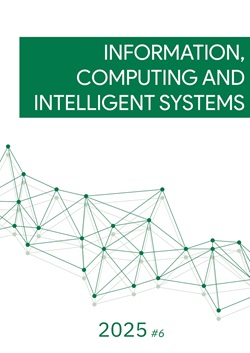Detection Method of Fraudulent Payment Transaction Based on C-Score Metric
DOI:
https://doi.org/10.20535/2786-8729.6.2025.333898Keywords:
fraud detection, C-score, F1-score, cost-sensitive learning, anti-fraud softwareAbstract
Fraud detection for payment transactions is a cost-sensitive task, as the costs associated with misclassification – such as missing a fraudulent transaction or incorrectly blocking a legitimate one – can vary significantly depending on business priorities. Traditional evaluation metrics, particularly the F1-score, ignore this asymmetry, creating a need for more flexible approaches. This research focuses on developing a method for building adaptive, cost-sensitive fraud detection systems. The aim is to develop a method that enables the practical application of the cost-sensitive C-score metric to configure a multi-level decision logic. The paper also presents a possible software architecture for its implementation.
The proposed two-phase method (offline calibration and online scoring) uses the C-score metric to determine multiple decision thresholds corresponding to different business scenarios. Its validation was conducted on the public “Credit Card Fraud Detection” dataset using the XGBoost algorithm. The Synthetic Minority Over-sampling Technique (SMOTE) was applied to overcome the severe class imbalance in the data, and a comparison was made against the traditional F1-score-based approach.
The experimental results showed that the proposed approach allows for the identification of two distinct thresholds from a single classifier. The first threshold ensures high precision, making it suitable for automated blocking of payment transactions with minimal false positives. The second threshold, focused on high recall, enables the selection of suspicious payment transactions for subsequent manual review. It was also confirmed that the SMOTE significantly contributed the model's class separation ability, thereby increasing the reliability of calibrating these thresholds. Based on the method, a practical blueprint for a service-oriented architecture is proposed for creating flexible and configurable anti-fraud systems.
References
R. J. Bolton and D. J. Hand, “Statistical Fraud Detection: A Review,” Statistical Science, vol. 17, no. 3, pp. 235–255, Aug. 2002, https://doi.org/10.1214/ss/1042727940.
“Card and Mobile Payment Fraud Worldwide” The Nilson Report, no. 1276, Dec. 2024. [Online]. Available: https://nilsonreport.com/newsletters/1276/.
J. O. Awoyemi, A. O. Adetunmbi, and S. A. Oluwadare, “Credit card fraud detection using machine learning techniques: A comparative analysis,” in 2017 International Conference on Computing Networking and Informatics (ICCNI), Oct. 2017, pp. 1–9, https://doi.org/10.1109/ICCNI.2017.8123782.
N. V. Chawla, K. W. Bowyer, L. O. Hall, and W. P. Kegelmeyer, “SMOTE: Synthetic Minority Over-sampling Technique,” jair, vol. 16, pp. 321–357, Jun. 2002, https://doi.org/10.1613/jair.953.
D. M. W. Powers, “Evaluation: from precision, recall and F-measure to ROC, informedness, markedness and correlation,” Oct. 11, 2020, arXiv: arXiv:2010.16061. http://doi.org/10.48550/arXiv.2010.16061.
C. Elkan, “The foundations of cost-sensitive learning,” in Proc. 17th Int. Joint Conf. on Artificial Intelligence (IJCAI’01), 2001, vol. 17, pp. 973–978.
M. Marwah, A. Narayanan, S. Jou, M. F. Arlitt, and M. Pospelova, “Is F1 Score Suboptimal for Cybersecurity Models? Introducing C-score, a Cost-Aware Alternative for Model Assessment,” in Proc. CAMLIS 2024 Workshop, 2024. [Online]. Available: http://ceur-ws.org/Vol-3920/paper11.pdf.
Machine Learning Group - ULB, “Credit Card Fraud Detection,” Kaggle. Accessed: May 26, 2025. [Online]. Available: https://www.kaggle.com/datasets/mlg-ulb/creditcardfraud.
XGBoost Developers, “XGBoost Documentation.” Accessed: May 26, 2025. [Online]. Available: https://xgboost.readthedocs.io/en/stable/.
D. S. Korynetskyi and I. V. Stetsenko, “Vykorystannia metryky C-score dlia optymizatsii metodiv vyiavlennia shakhraiskykh platizhnykh operatsii,” in Inzheneriia prohramnoho zabezpechennia i peredovi informatsiini tekhnolohii (SoftTech-2025): materialy VIII Mizhnarodnoi naukovo-praktychnoi konferentsii molodykh vchenykh ta studentiv, May 13–15, 2025, Kyiv, FІОТ, pp. 41–44.
Y. Le Borgne, G. Bontempi, et al., “Fraud Detection Handbook.” Accessed: Jun. 26, 2025. [Online]. Available: https://fraud-detection-handbook.github.io/fraud-detection-handbook/Chapter_5_ModelValidationAndSelection/ValidationStrategies.html.
Downloads
Published
How to Cite
Issue
Section
License
Copyright (c) 2025 Information, Computing and Intelligent systems

This work is licensed under a Creative Commons Attribution 4.0 International License.




